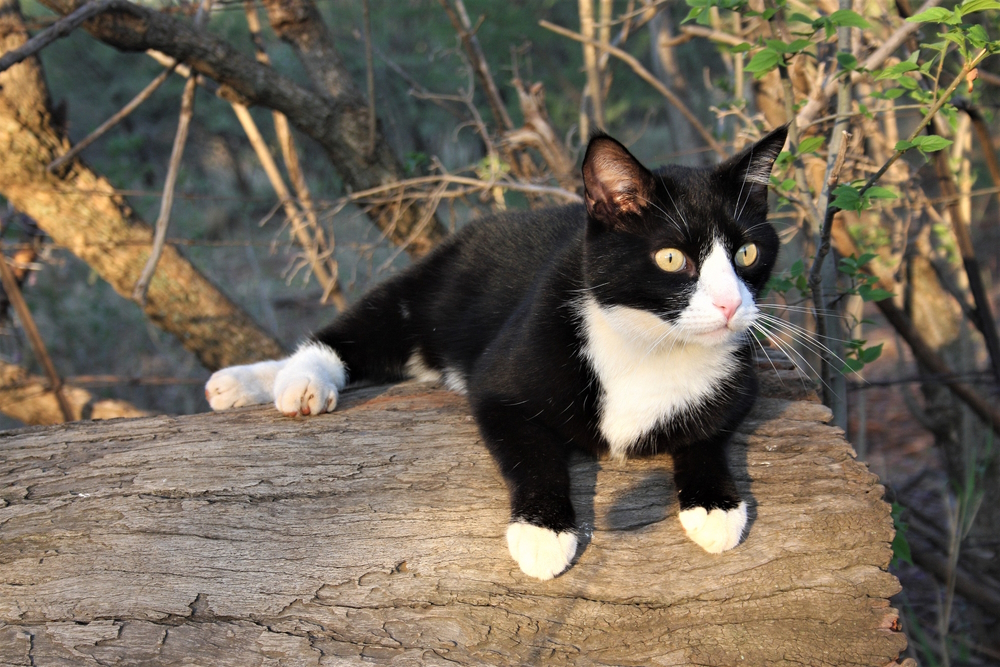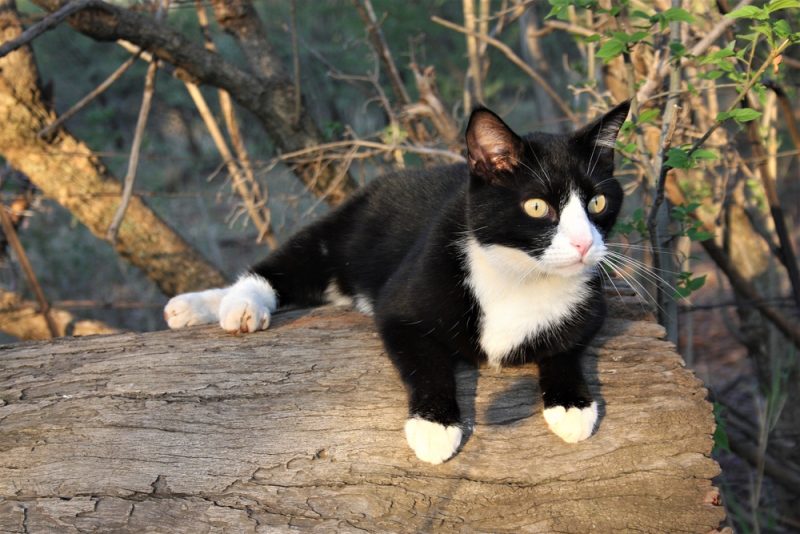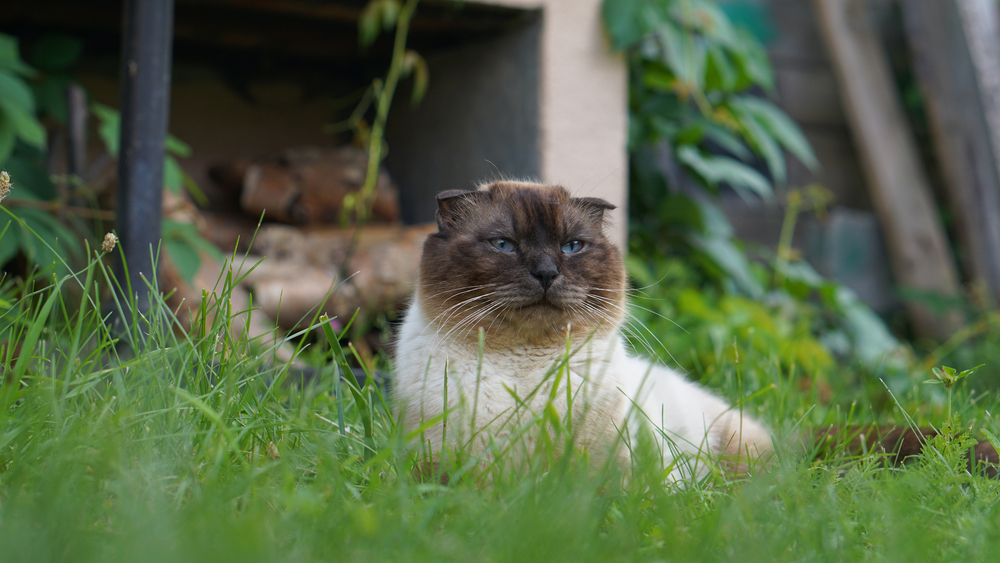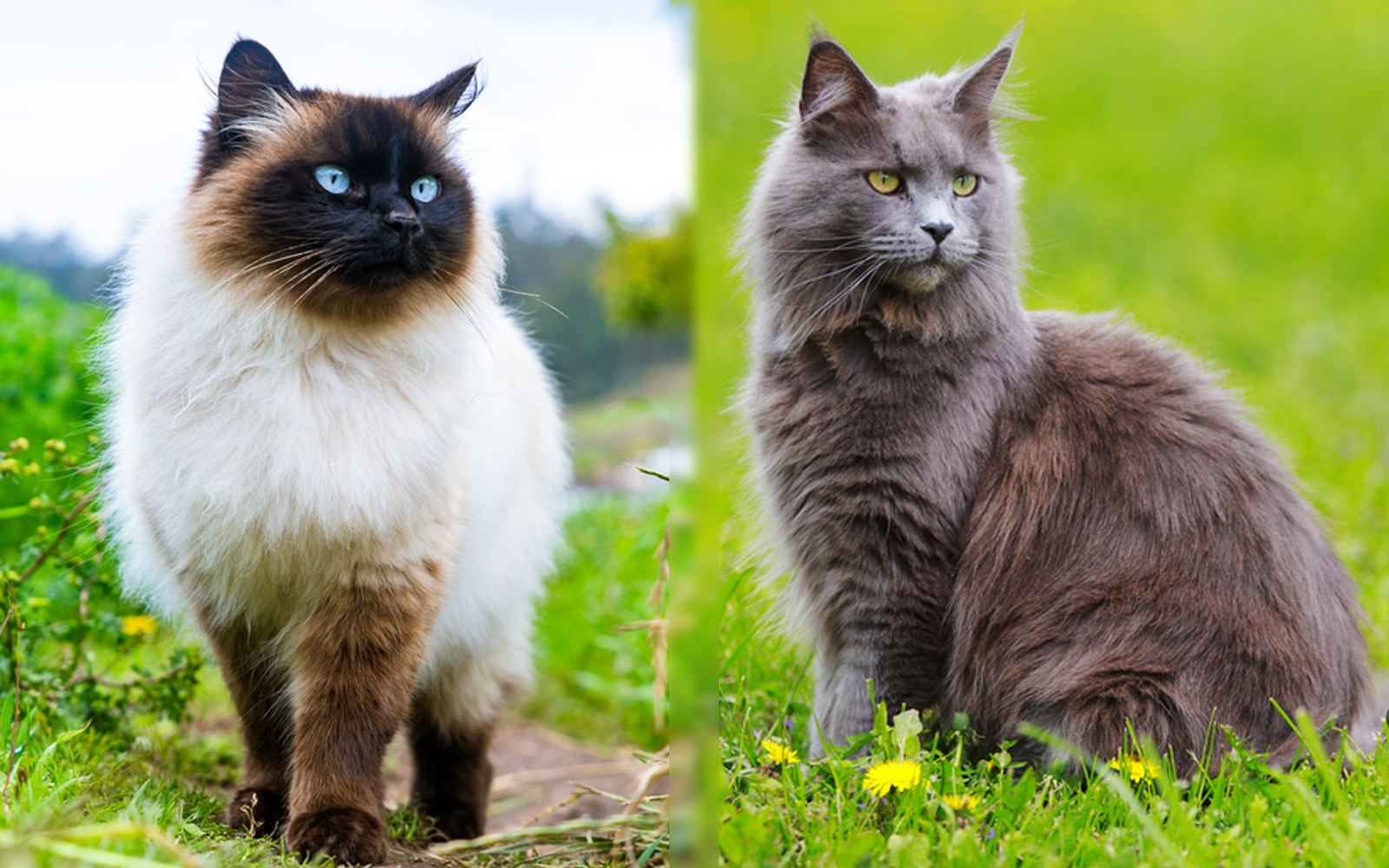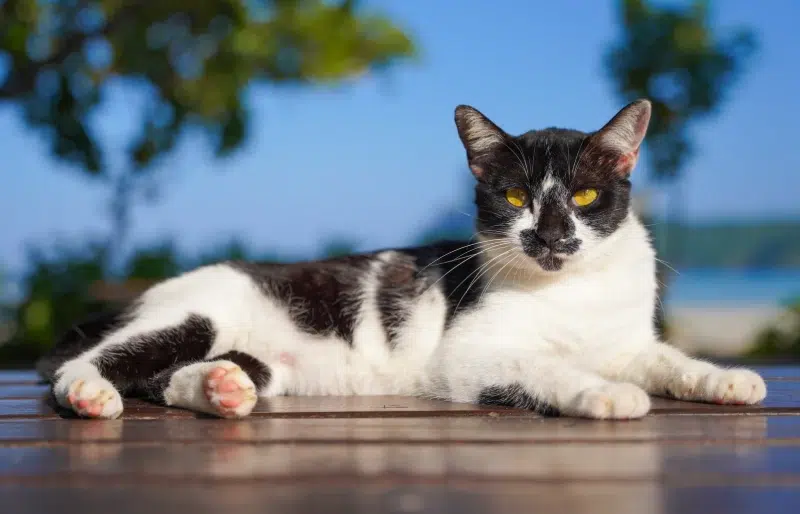Tuxedo cats are highly recognizable since they look as if they’re wearing a tuxedo. They’re incredibly popular felines, but did you know they aren’t a breed? Nope, tuxedo cats can be any breed out there; the fancy tuxedo look they sport is simply a coloration. And that tuxedo pattern doesn’t have to be black and white (though black and white is common). Tuxedo cats can also be gray and white or even orange and white.
What gives these felines their tuxedo look? It has to do with the white spotting gene known as the “S” gene. Felines born with one recessive and one dominant type of these genes typically have the tuxedo pattern. Those born with two dominant “S” genes would have a lot of white spotting on the body, while those born with two recessive genes would have little white on them.
What else do we know about tuxedo cats?
The Earliest Records of Tuxedo Cats in History
Because tuxedo cats aren’t a breed but a coloration, it’s difficult to know exactly when this coat coloration first occurred. As far as we know, though, the earliest records of tuxedo cats date back to Ancient Egypt, where felines were held in high regard.
Not only did the Ancient Egyptians find cats helpful for taking care of pests, but they loved them enough that felines were often entombed with their humans. Cats were also frequently depicted in tomb paintings, and this is where the tuxedo cat (or at least, bi-colored cats) seems to have first appeared in the historical record. While the Ancient Egyptians enjoyed felines, in general, they were particularly fond of tuxedo cats, as these kitties were thought to bring good luck and fortune.
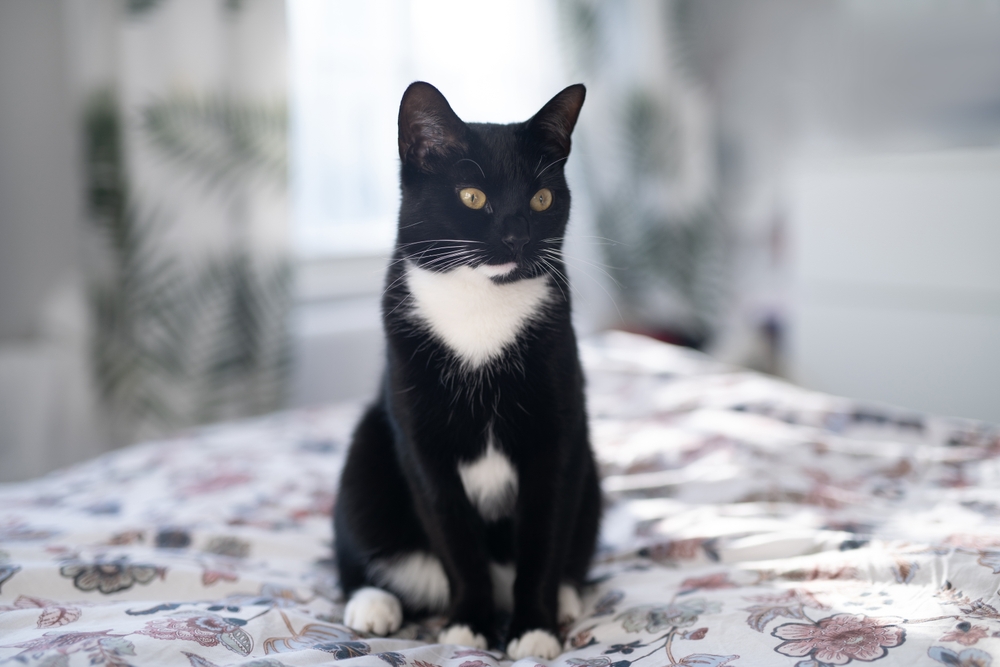

How Tuxedo Cats Gained Popularity
The tuxedo cat’s role in society hasn’t changed much since Ancient Egypt. Even now, people are fascinated by these kitties’ bi-colored coats and the fact they look as if they’re wearing tuxedos! People have held such a fascination with the unique coloring of tuxedo cats that throughout the years, there have been several famous tuxedo cats, as well as famous owners of tuxedo cats.
Who were some of these famous kitties? Just a few include:
- Sylvester, of Looney Tunes fame
- Felix the Cat from the 1920s
- Mistofelees, who originated in T.S. Elliot’s 1939 book Old Possum’s Book of Practical Cats and ended up being a character in Andrew Lloyd Webber’s Cats
- The cat in the story The Cat in the Hat by Dr. Seuss
- Socks, the ‘First Cat’ of the White House during the Clinton era
- Oscar, also known as Unsinkable Sam, who survived three shipwrecks, all during 19411
- Roderick, who supposedly climbed Mt. Everest
And as for those famous owners, just a few include:
- Sir Isaac Newton (supposedly)
- Shakespeare (supposedly)
- Beethoven (supposedly)
- The Clintons
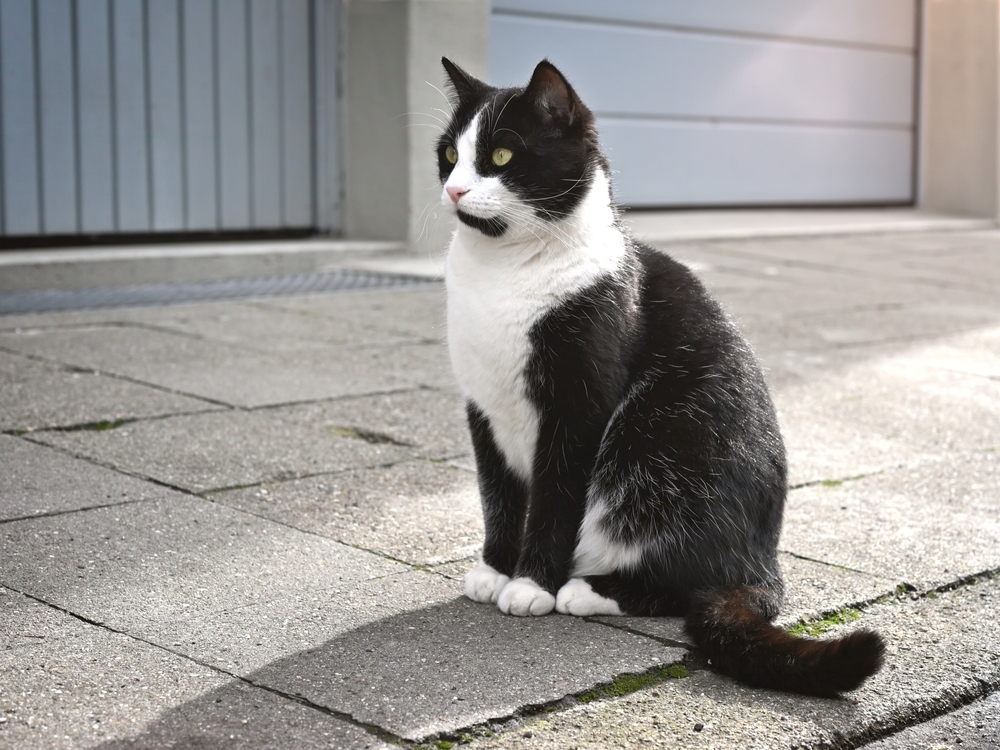
Formal Recognition of Tuxedo Cats
Because tuxedo cats are a coloration and not a breed, whether this coloring is recognized by official associations and clubs, such as the American Cat Fanciers’ Association (ACFA), varies by breed. So, the tuxedo coloring is recognized as official for certain feline breeds but not others. Some of the cat breeds that do have the tuxedo coloring recognized in their breed standards (according to the Cat Fanciers Association2 (CFA)) include:
- Sphynx
- American Curl
- Scottish Fold
- American Shorthair
- British Shorthair
- Exotic Shorthair
- Peterbald
- Cornish Rex
- Devon Rex
- Persian
- Norwegian Forest Cat
- Munchkin
- La Perm
- Maine Coon
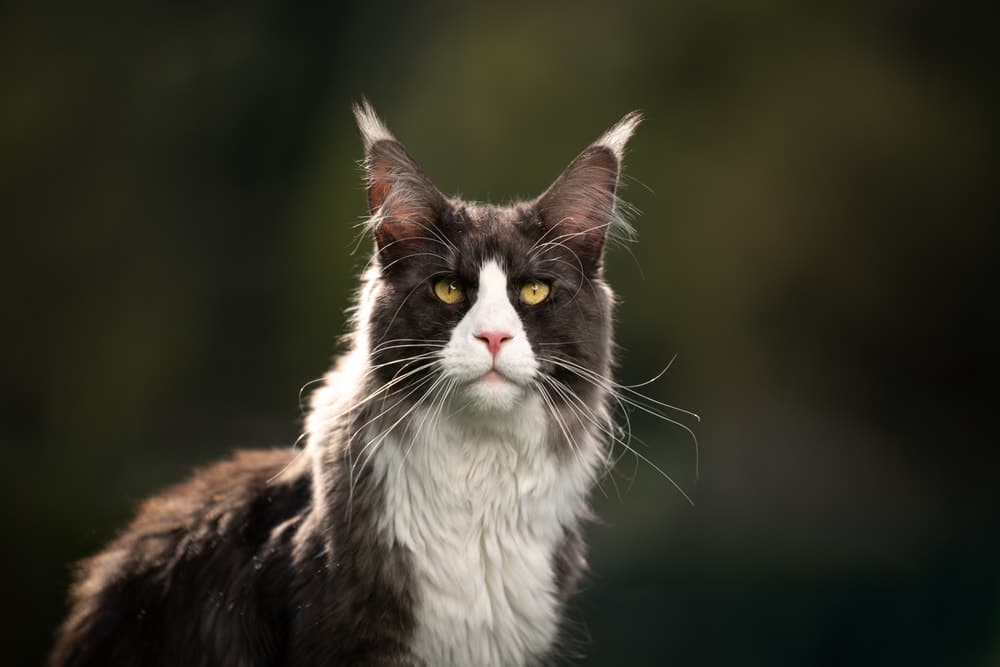
Top 5 Unique Facts About Tuxedo Cats
Here are a few unique facts about these unique felines!
1. A tuxedo cat was once the richest cat in the world.
In 1998, there was a tuxedo cat named Sparky whose owner passed away. The owner left their beloved kitty a whopping $6.3 million! Since Sparky, though, there have been other cats to come along who were much wealthier.
2. A tuxedo cat once ran for mayor.
No, we’re not joking! A tuxedo cat named Stan ran for mayor of Halifax, Canada in 2012. He ran as a candidate of the Tuxedo party but, alas, did not win.
3. Tuxedo kittens open their eyes sooner than any other color of cat.
For some reason, this color of kitten opens their eyes at least 24 hours before most other colors of kitten!
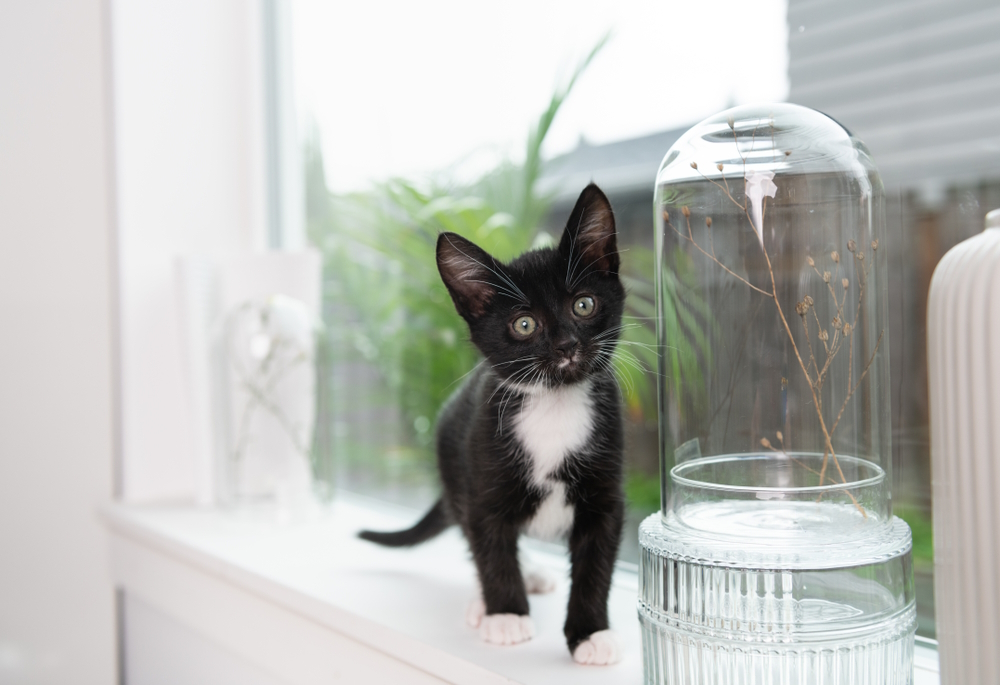
4. Different styles of tuxedoed cats have different monikers.
Tuxedo cats with white around the nose and chin are known as “masked tuxedos”, while those with mustaches are known as “kitlers”.
5. Tuxedo cats are magical.
Or so the rumor goes. Apparently, during the vernal equinox (or autumnal equinox), these felines become invisible!
Do Tuxedo Cats Make Good Pets?
Tuxedo cats can make fantastic pets, though what a tuxedo cat’s personality is like will depend upon what breed they are. A tuxedo cat’s breed will also determine how much they want to play, what kind of food they need, how they are groomed, and more. Research any cat breed carefully before adopting to ensure that the breed will be a good fit for you. Some felines are quieter than others, while some are more rambunctious; it really just depends. But almost any cat breed will make a wonderful pet for the right person.
The tuxedo coloring doesn’t affect a cat’s personality or behavior in any way, though; it just makes a cat look like they’re on their way to a fancy dinner party!
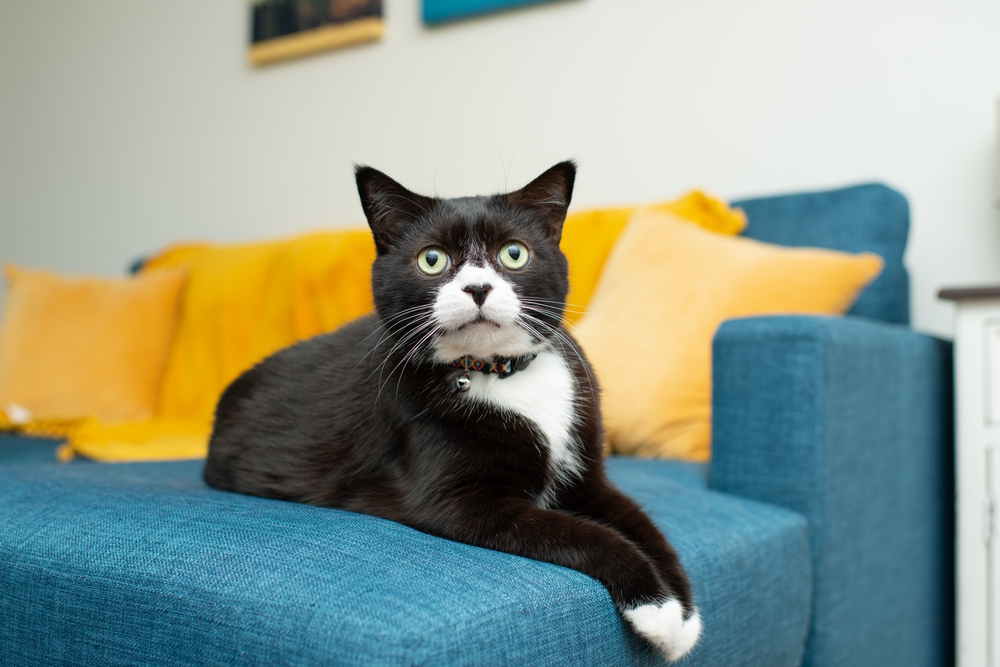
Conclusion
Tuxedo cats aren’t a breed. The tuxedo pattern found on some felines is simply a bi-color pattern that occurs. These cats aren’t that rare, and several breeds have this coloration, so it shouldn’t be too much of a challenge to find one of these kitties if that’s what you’re looking for. Just make sure that you get a breed that’s a good fit for your household before going through with adoption!
- See also: How Much Do Tuxedo Cats Cost
Featured Image Credit: Bettina Calder, Shutterstock
Contents
- The Earliest Records of Tuxedo Cats in History
- How Tuxedo Cats Gained Popularity
- Formal Recognition of Tuxedo Cats
- Top 5 Unique Facts About Tuxedo Cats
- 1. A tuxedo cat was once the richest cat in the world.
- 2. A tuxedo cat once ran for mayor.
- 3. Tuxedo kittens open their eyes sooner than any other color of cat.
- 4. Different styles of tuxedoed cats have different monikers.
- 5. Tuxedo cats are magical.
- Do Tuxedo Cats Make Good Pets?
- Conclusion

